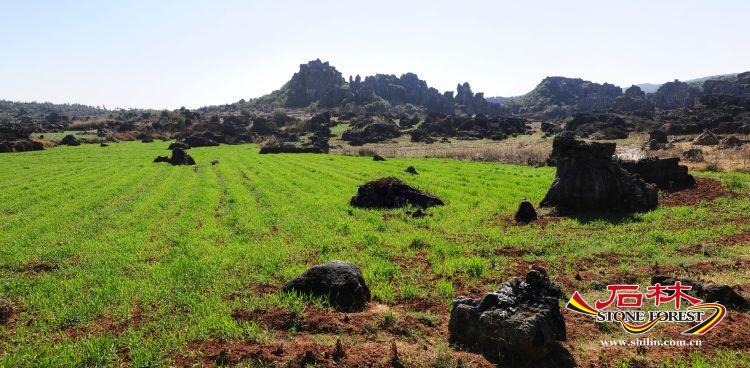- Children from Shijin Kindergarten Made a Study Trip to Shilin UGGp
- Have a spring date with Shilin flowers
- Call for hosts of the 12th International Conference on UNESCO Global Geoparks in 2027
- Call for applications: UNESCO Global Geopark Mentorship Exchange
- Representatives of Changshan Aspring UGGp Visited Shilin UGGp
- Shilin UGGp Visited Xingyi Aspiring UGGp
- Children from Peiqi Kindergarten Visited Shilin UNESCO Global Geopark
Suoyishan-Wenbishan Stone Forests Area
Located in the southern rim of the Shilin Global Geopark, Suoyishan Stone Forest developed in Devonian Dolomitic limestone. Devonian carbonates occurred mostly in the eastern and southern marginal area in which cone karst, doline and stone teeth are widely developed. In this sense the Suoyishan Stone Forest is the only exception in the whole Shilin area that stone forest karst developed in Devonian dolomitic limestone. Definitely there are some specially localized geological and hydrological conditions favorable for the phenomena, but the study so far is not enough to provide good interpretation.

The Suoyishan Stone Forest Area (photo by Li Lanying)
Similar to those stone forest clusters developed in dolomitic limestone, the Suoyishan Stone Forest is gray in color as a whole. But the chemical composition of the rock is far more homogeneous than the Qixia formation of the Middle Permian; the rock surface is commonly smooth and no obvious differentiated solution as the case in the Naigu Stone Forests Area.
Morphology and structure is the most striking feature that Suoyishan differs from other stone forest karsts. In this area the two conjugate joint sets in the rock are not evenly developed but dominated by the one in NW orientation, so wall-like karst occurred since the stone pillars are not well isolated. A few isolated “pillars” take the shape of tower with relatively thick base and thinner top. Because the rock is thin- bedded, the towers and pillars show typical “block” or “rectangular” shapes. There can be as more as twenty layers in a tower. In association with the karst towers are some seasonal water pools; and one interesting phenomenon that has not been well explained is that there is a pool dry in rainy season but filled with water in dry season. There must be an unusual reason behind the scene.

The distant view of Suoyishan Stone Forest Area (photo by Li Lanying)
Suoyishan represents one of the many stone forest karst landforms of the Geopark, not only for its rock type but also for its overall geomorphologic feature.
There is an age-old Yi village in the vicinity of Suoyishan karst, Suoyishan Village. the villagers have developed their lifestyle in association with the karst. Their culture is therefore an integrated part of the landscape in this area.

Local Yi people and the Suoyishan Stone Forest (photo by Li Lanying)
Wenbishan is the highest peak in the Geopark elevated at 2,200m. This is the area featuring the stone forest karst occurred in highest position of Shilin area. In relation to the stone forest clusters occurred at 1,700m, the altitudinal gradient in which stone forest karst developed is 500m. Carbonate exposed at Wenbishan is Maokou pure limestone, since stone pillars and clusters distributed along the mountain ridges, it is regarded as“ ridge stone forest”.
At Wenbishan the stone forest karst is in close association with indigenous plant forest, some stone clusters are hidden by the dense trees, some crop out the tree top, presenting characteristics similar to some extent to those of Mulu, Malaysia.
Wenbishan Stone Forest is also an important area of the part demonstrating the typical plateau karst ecosystem.
